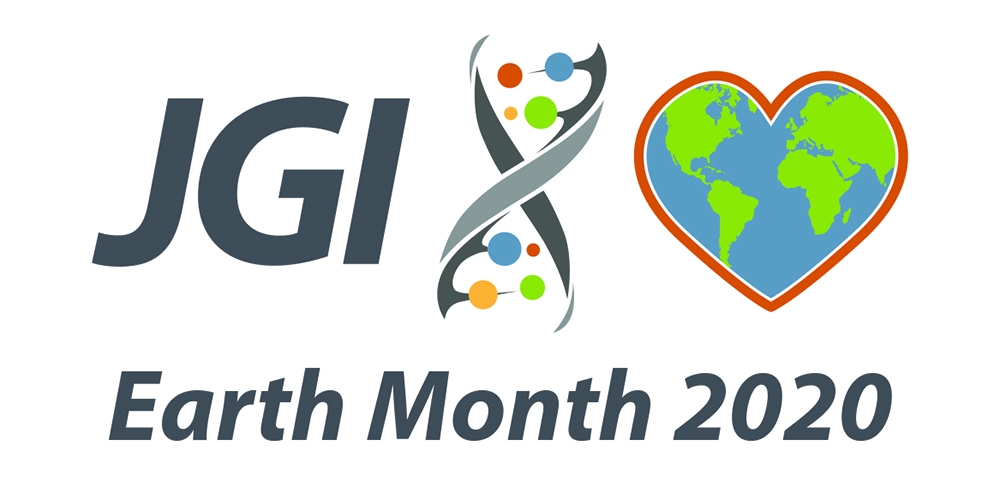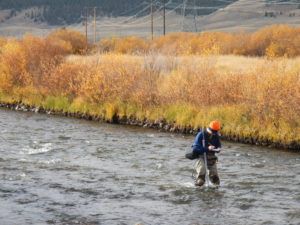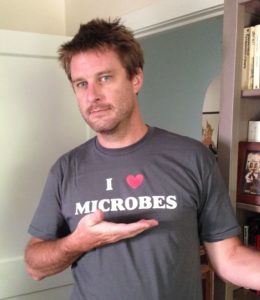In April 2020, we mark both the 50th celebration of Earth Day on April 22, and DNA Day on April 25. As both Earth and DNA are close to our JGI hearts, we’re highlighting genomic science research that feels especially relevant to living on a changing planet.

Transcript for Audio
ALISON: Hey! I’m Alison Takemura at the U.S. Department of Energy Joint Genome Institute, or JGI.
Two special days occur in April: the 50th celebration of Earth Day on April 22, and DNA Day on April 25. Since both DNA and the Earth are close to our JGI hearts, we’re featuring some scintillating genomic science research that feels especially relevant to living on a changing planet.
In this short audio production, we’ll hear from Ed Hall, an ecologist at Colorado State University in Fort Collins. He’s part of a JGI-supported project studying the world’s rivers and their microbial communities. He’s focusing on the Arkansas River and how microbes might be influencing its health.
He sat down with me to talk about his project, and riffed a bit on what it means in a more global context. As we approach Earth Day, I thought you might enjoy hearing what Ed had to say. Ed’s research takes him to a portion of the Arkansas River that’s just a little west of Fort Collins, near a city called Leadville.
ED: And, uh, Leadville is interesting. As the name suggests, there is metal in the hills, and it has legacy mining that goes back more than 100 years. And in particular, there’s an inflow from the mining activities upstream and downstream of the Arkansas. However, recently, there’s been a major restoration effort. So I had a PhD student named Brian Wolff.

Grad student Brian Wolff samples the Arkansas River. (Courtesy of Ed Hall)
He was looking at the invertebrate communities upstream and downstream, which is how the EPA, it’s one of the indices they use for stream health, they look at how many invertebrate species are there.
ALISON: Those invertebrate species include mayflies and the caddisflies, which are of keen interest to fly-fishers.
ED: And he found that the number of species were the same, but what they’re eating was different, and what they’re eating are microbes. And so that led him to come to me with the question, well, how are the microbes being affected by the metals? When metals are introduced, how do they adapt by changing what macromolecules are in their biomass, because that affects the quality of the food of these invertebrates that we use as indices. So it’s really quite a broad ecosystem approach. And that led me to get even more interested in how general environmental stressors, um, alter microbial biomass and then what the consequences are for ecosystem.
ALISON: So, Ed is trying to understand how the molecules in tiny microbes can impact whole ecosystems. Part of the reason he’s asking this question is actually because he thinks it could very well help us as the world becomes a much more crowded place.

Ed Hall, ecologist at Colorado State University in Fort Collins, is researching river health by analyzing how metals affect the nutrient-density of microbes. (Courtesy of Ed Hall)
ED: I mean I really think we’re at a unique time in human history, where we’re moving from when my father was born, of about 2 billion people on the planet, to you know, within my lifetime, we should hit around nine or 10, which is thought to be where we’re going to level off. And that’s in a single lifetime, right? Or maybe two generations. And so, you know, and the real question is, can we do this without, you know, [beep]ing the proverbial bed, right? Can we make that change and keep the ecosystem services intact that we need to survive, that humanity needs? And some of these discoveries might actually, I mean, they literally may be the key to keeping things going, our agricultural systems could become more sustainable through applications of microbiome science; our water quality, our water resource needs are, are tightly coupled to microbiome science.
I mean, I’m really, it’s not hyperbole, I think like it’s, it’s this unique time where the preceding 300 years, that change was not occurring at that pace, right. And then, hopefully, 3-400 years down the road we’ll have a steady state where we can keep improving it, but this rapid shift in population and the environmental implications of it. I mean, that’s, that’s today. I teach a class on ecosystem ecology — and I tell my students, you know, this is not academic. I mean, this is in your lifetime, you’ll get to see this. These aren’t projections for your grandchildren, these are projections for you.
ALISON: This audio production has been brought to you as part of JGI’s month-long celebration of genomic science and planet Earth. I’m Alison Takemura. See you next time.